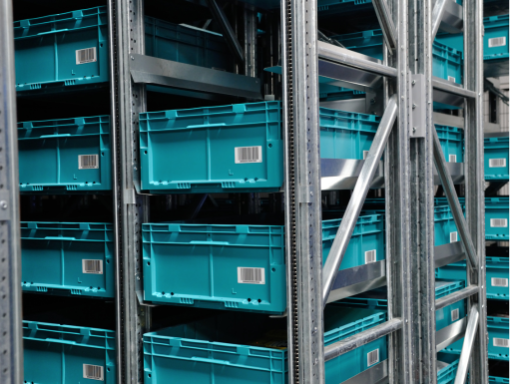In today’s world, everything is digital. Automation is a crucial element of every business function, from marketing to selling—and the level of automation is always growing. Warehouse management is no exception.
Automation in warehouse management involves a wide range of tasks: monitor inventory levels, communicate with outsourced systems, create orders, provide visibility for customers, show what’s in stock, manage systems of record, and ensure stock compliance. Today, those tasks are multiplying. Warehouse automation includes bagging products, picking items, aiding omnichannel process options, facilitating curbside pick-up, and more.
Depending on where your business stands, making the shift to a largely automated process can seem daunting. So, is it really a necessary step for your business?
Warehouse management is a crucial system of record — you need to track stock in compliance with company standards, provide inventory availability to customers, and ensure orders can be made within that stock. However, as eCommerce has grown, the average order size has decreased. That means there’s even more to keep your eyes on — there are more orders, more tasks to fulfill those orders, and more stops and drivers needed to deliver those orders. Put simply, there’s a lot to lose track of without an automated system in place.
Before you make a decision about your warehouse management needs, let’s see where you stand.
Bad signs of warehouse management practices:
- Manual work assignments: In the past, manual work assignments were both effective and expected. A supervisor could simply tell an associate to grab 12 pallets for an order and go about their business. But today, this process is no longer feasible to deliver products on time and to the customer’s standards.
- Users deciding for themselves what to do: Your team is smart, thoughtful, and cautious. However, they’re still people. People, regardless of experience and exceptionality, are prone to mistakes. When users decide what to do for themselves, without systemic direction, they have to work harder and remember more. This creates even more issues when that user has to pass the torch to a new user who is unfamiliar with their process.
- No process implemented for exception handling: The worst exception handling process is no process at all. Without an implementation process in place, it’s easy for tasks to slip through the cracks and for you to lose sight of your goals. The process is key to getting your business on the right track.
Good signs of warehouse management practices:
- Self-service & system-directed work: A self-directed team includes various team members with different skills and talents, all working together in different roles to help reach a common goal. This approach allows everyone to focus on what they do best while minimizing the likelihood of error.
- Automated processes in place: When automated processes are put into place, it’s easier to stick to schedules, onboard team members, create a reliable reference, and predict upcoming changes within your warehouse management needs.
- The 80/20 approach: Successful supervisors follow an 80/20 rule: focus on the 20% of problems that cause 80% of the warehouse management headaches. However, the most successful supervisors use automation to reduce the need to pick and choose.
You just identified good and bad signs in your warehouse management, but now it’s time to take one step further. If you noticed bad signs, it’s time to turn your management around. If you noticed good signs, now is the time to find an even better way to manage your warehouse.
Changing processes within warehouse management can seem like a big hurdle. It’s one reason why there is a common misconception that the original process is the best process. After all, many of these processes were built with best practices in mind. But times change, and what was once effective is no longer the case — especially in the world of eCommerce.
Now, it’s time to ask yourself, “Why are we managing our warehouses this way? Are we meeting the demands of the modern marketplace?”
One of the most common reasons supervisors want to stay on the same path is size. When you have a small warehouse, it can seem unnecessary and overly challenging to adopt an automated warehouse management system. But as our experts have seen firsthand, this is not the case.
If you’re working with multiple duties and roles — no matter how large your warehouse is — you can benefit from an automated system. Operating manually is hard work, and allows for errors, confusion, and repetition. With automation, you don’t have to worry about whether your spreadsheet or stock levels are accurate. Instead, you can balance inventory visibility and create a trustworthy system.
The best way to begin automated warehouse management is by working with ECOMPLETE.
Our team is here to help you with a holistic warehouse management solution that smoothes your expansion into eCommerce. Created by Hy-Tek and Johnson Stephens Consulting (JSC) experts, the ECOMPLETE solution helps your warehouse thrive.
With ECOMPLETE, you can:
- Retrofit a previously-built retail setup
- Learn from customer interview questionnaires
- Fine-tune average order size, order volumes, and trend forecasting
- Review processes already put into place
- Reduce your click-to-ship rate, improve expected delivery window, prioritize labor needs, and focus on outbound processing
Learn more about taking your warehouse management to the next level. Contact our team today to see how ECOMPLETE can transform the way you work — for the better.





